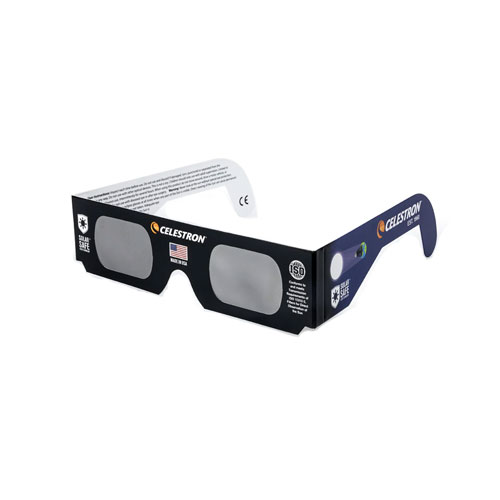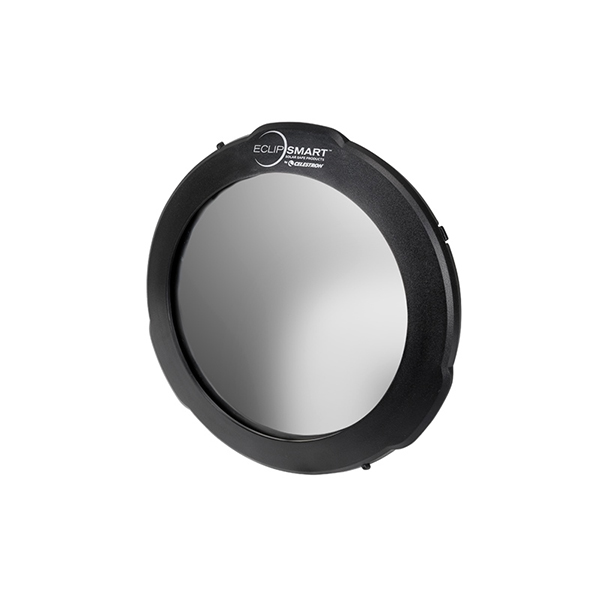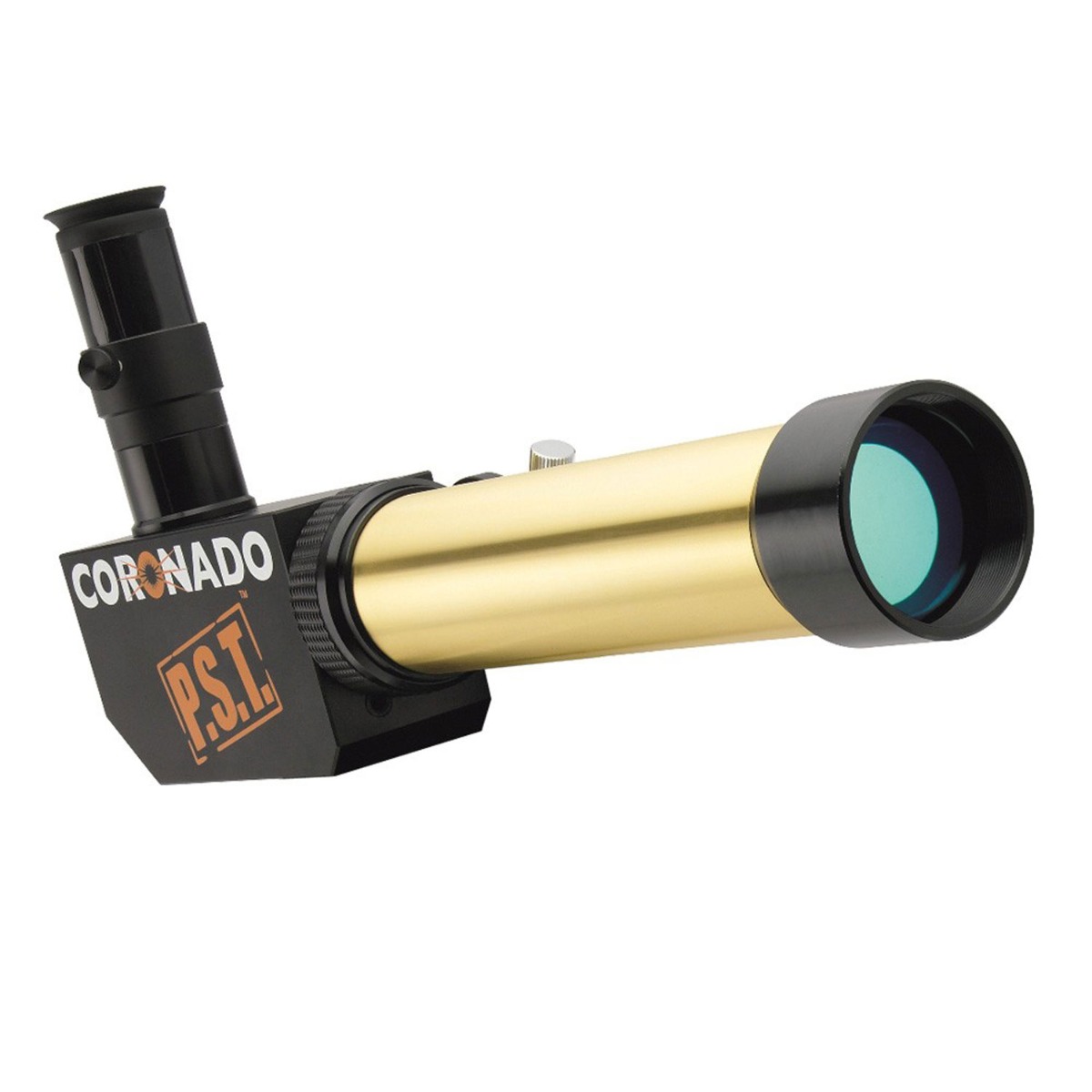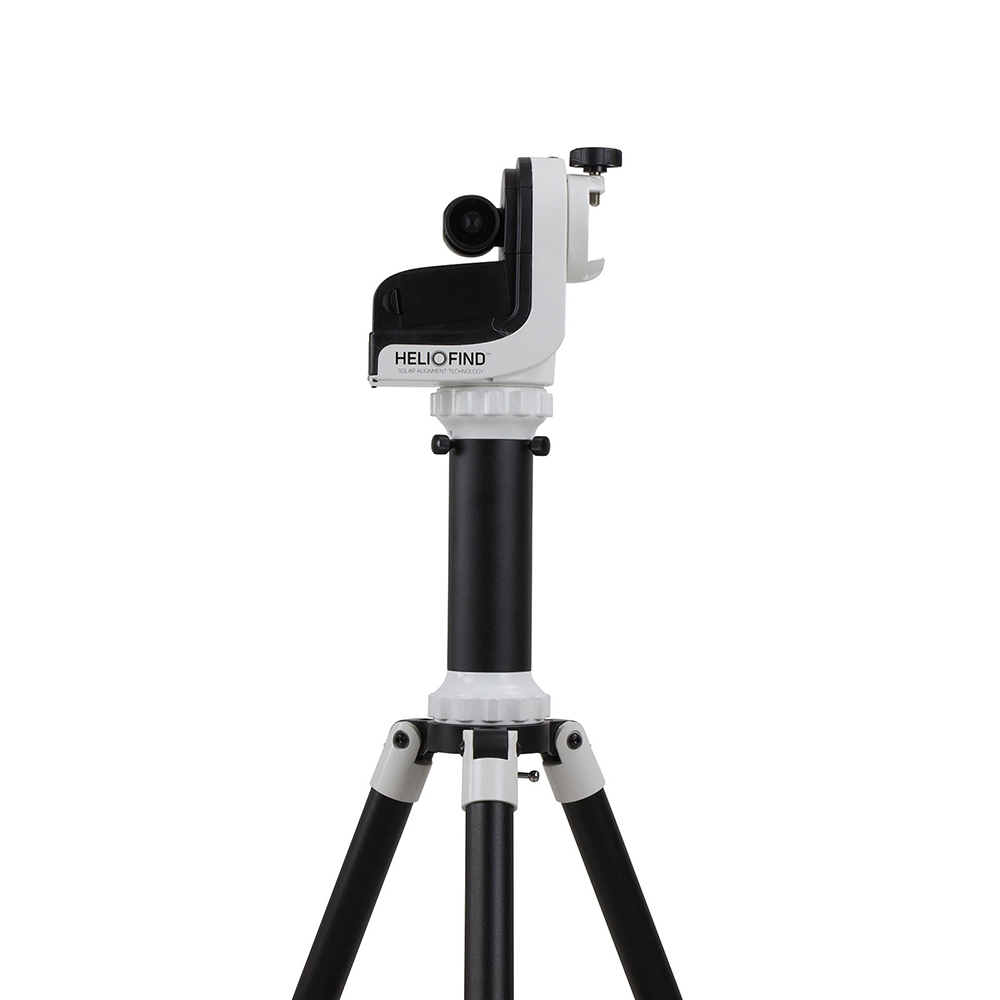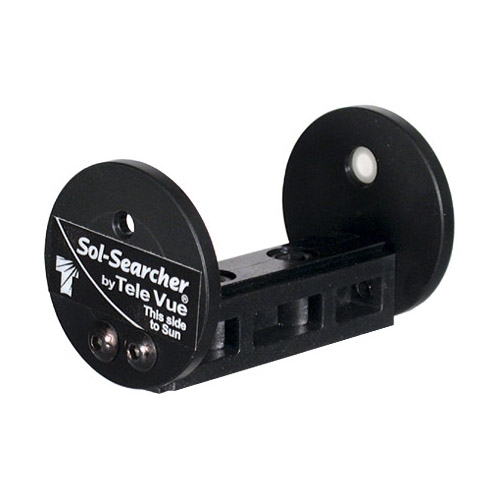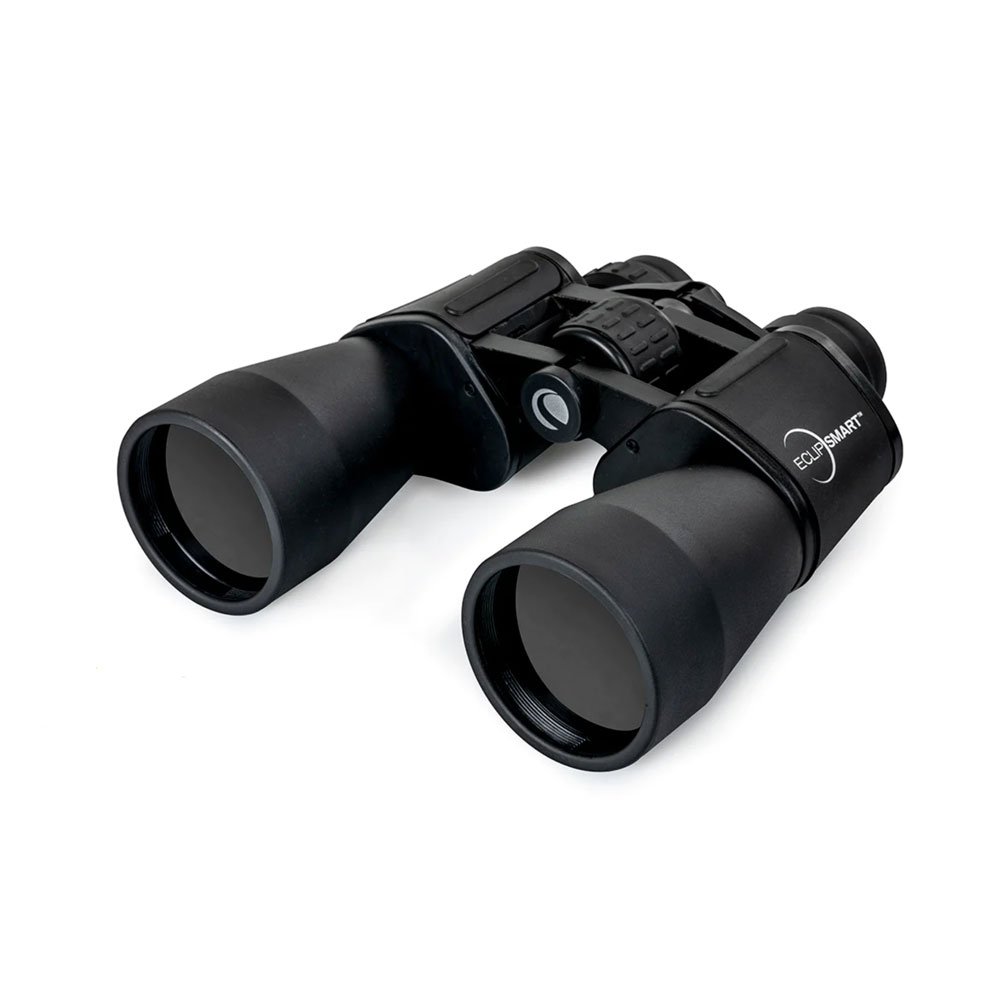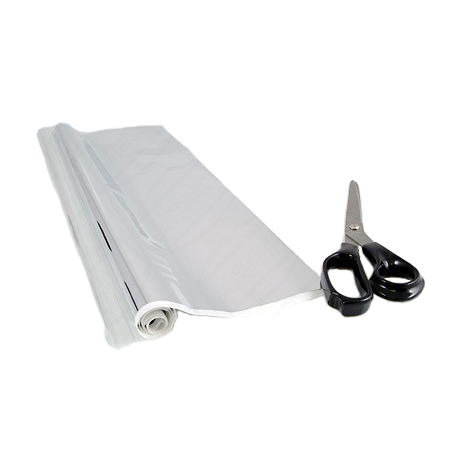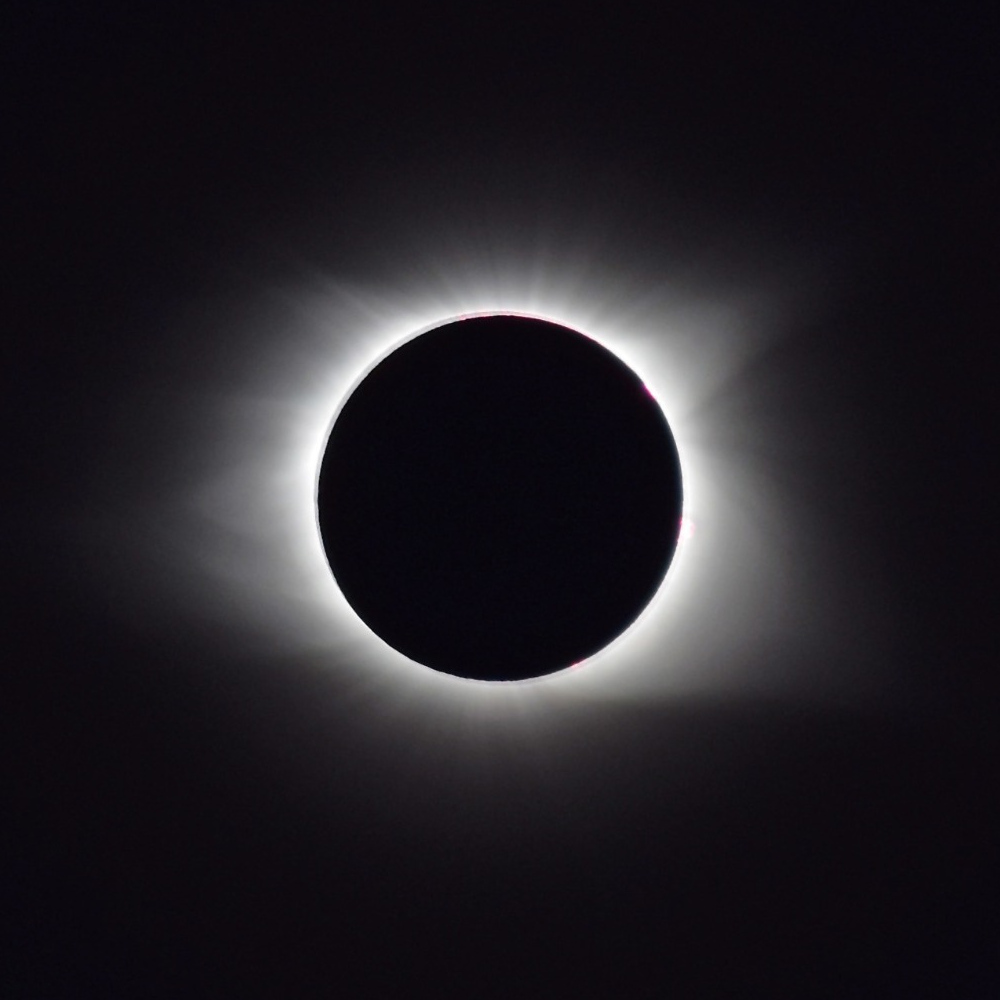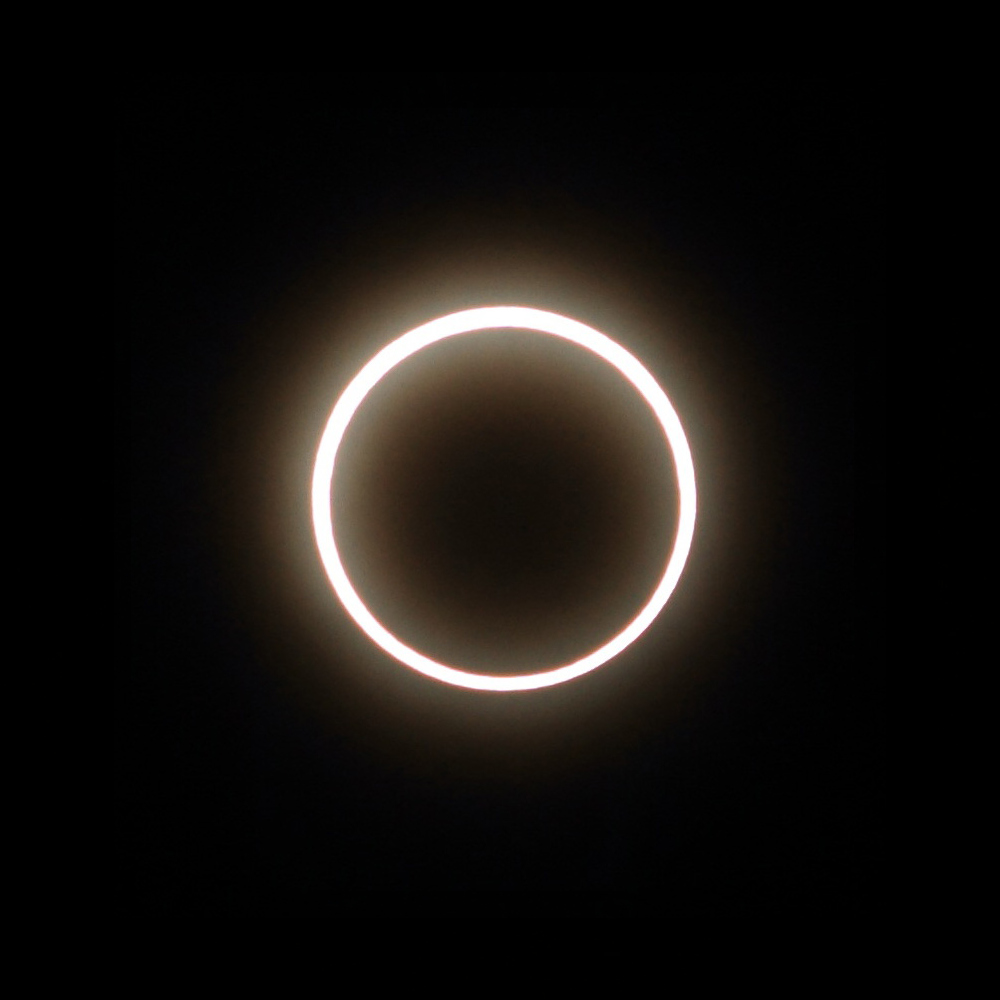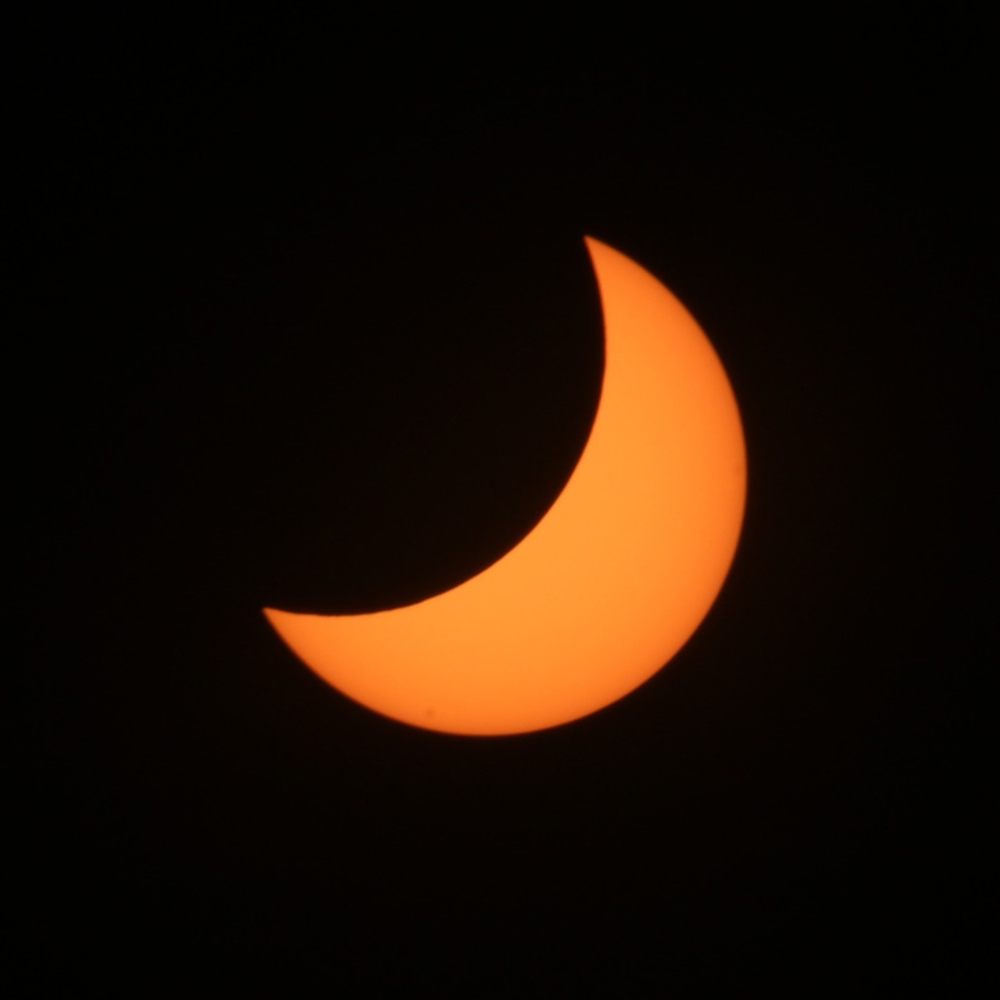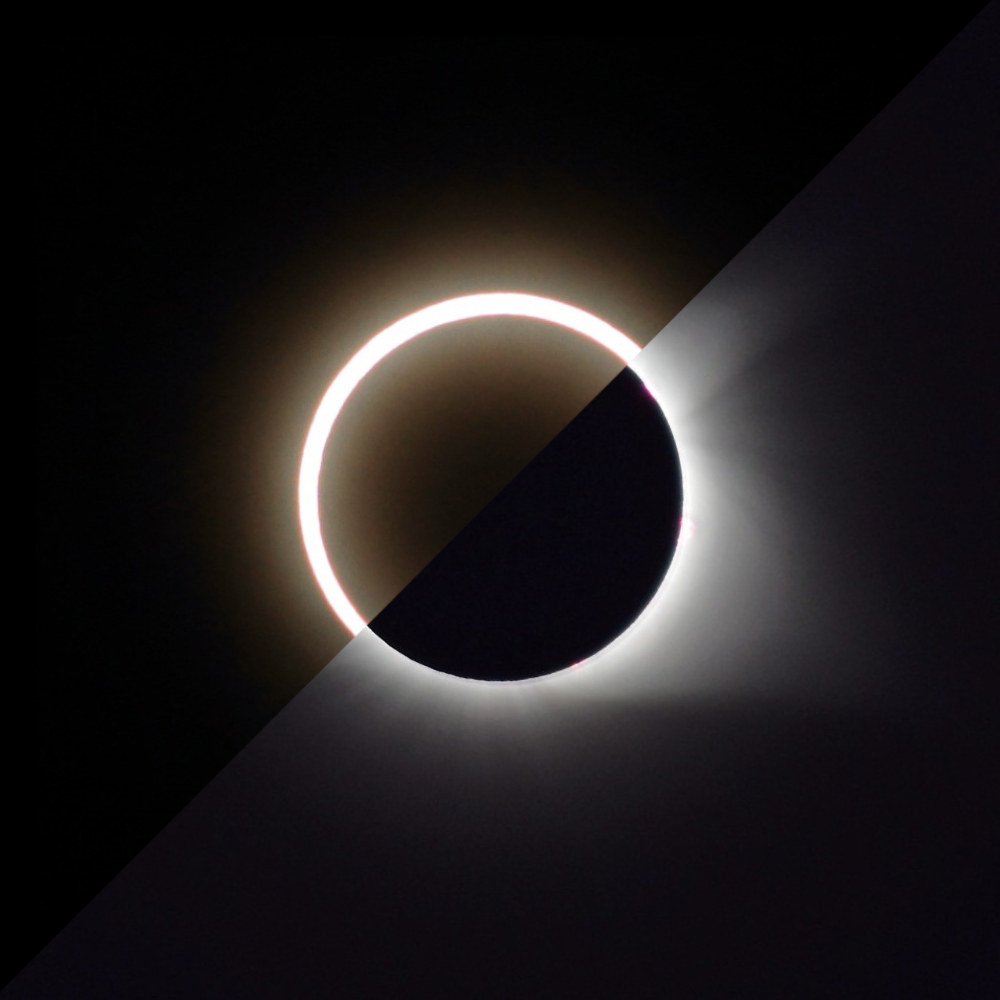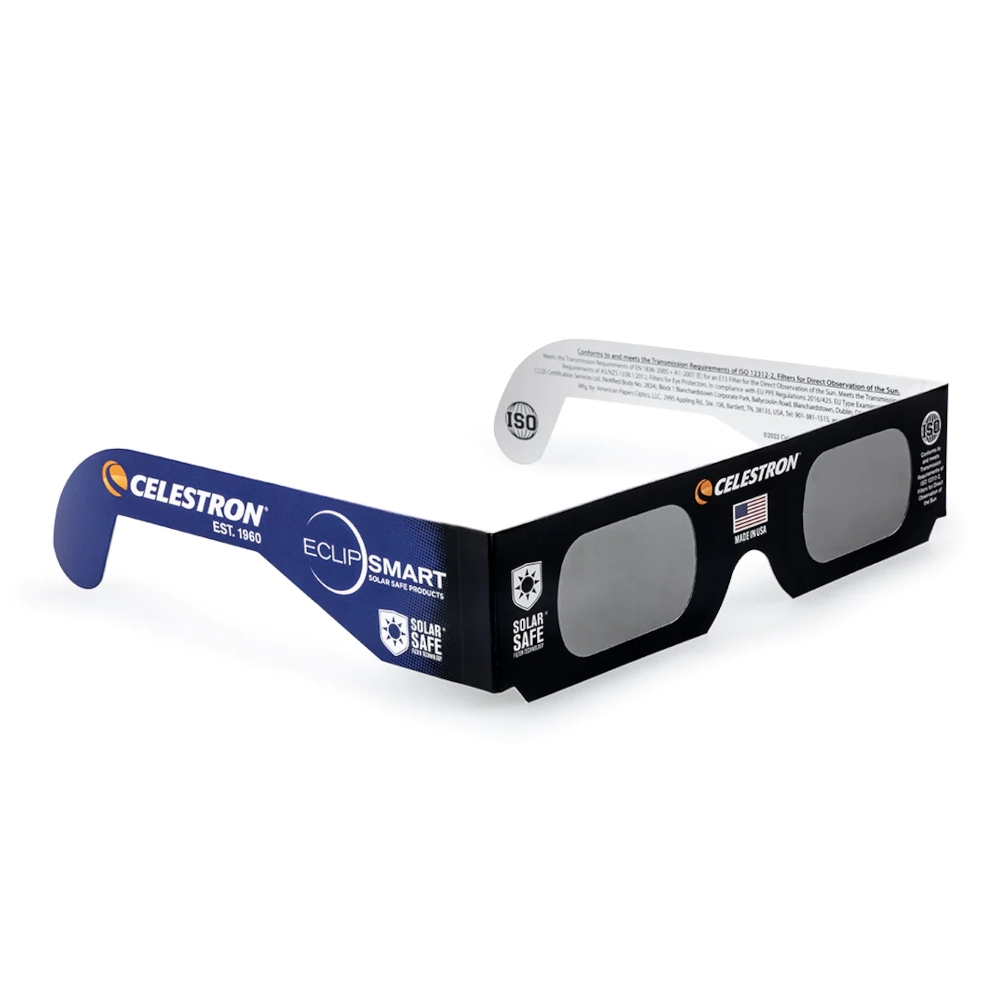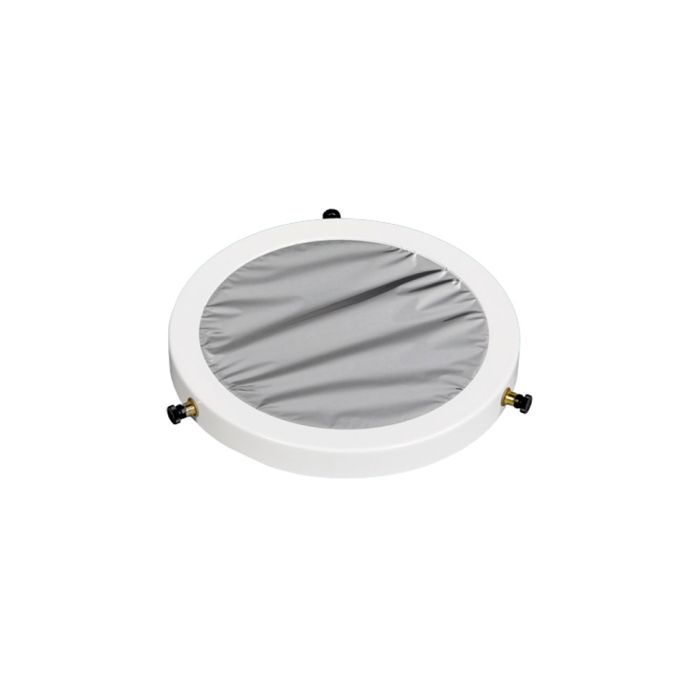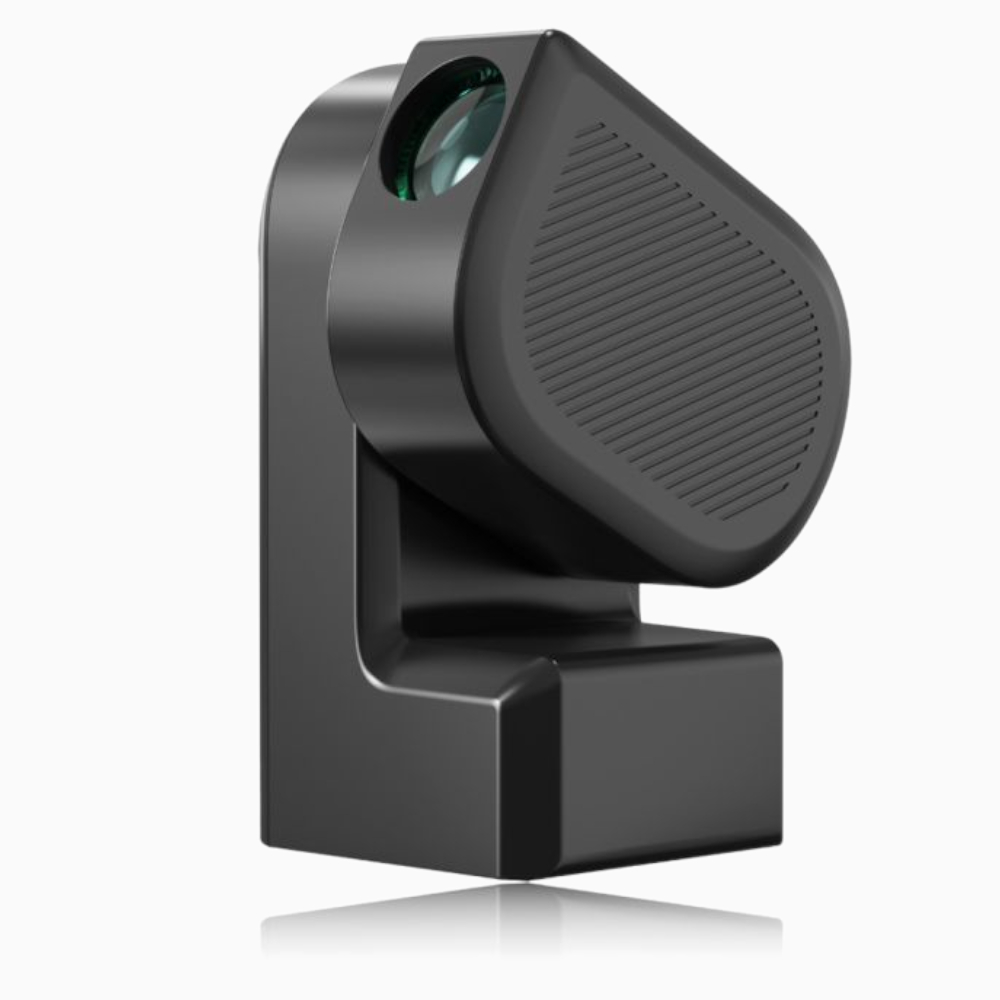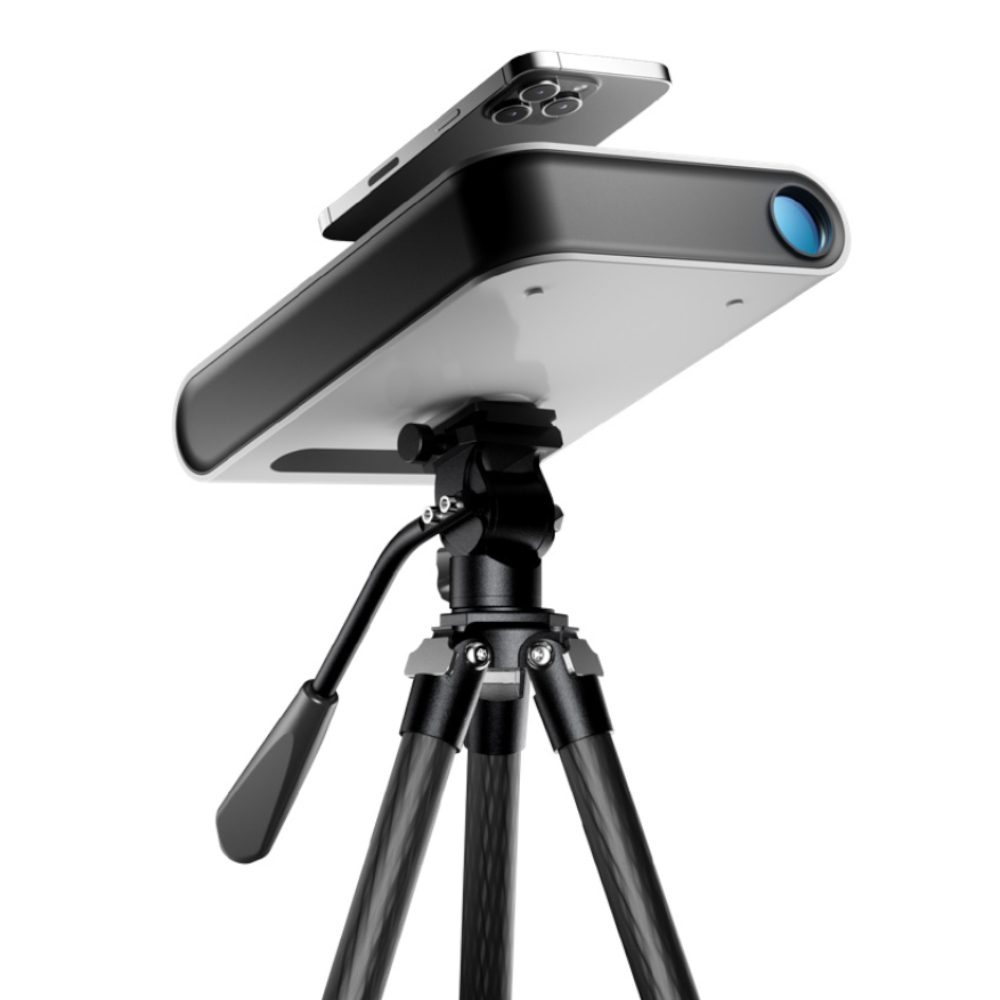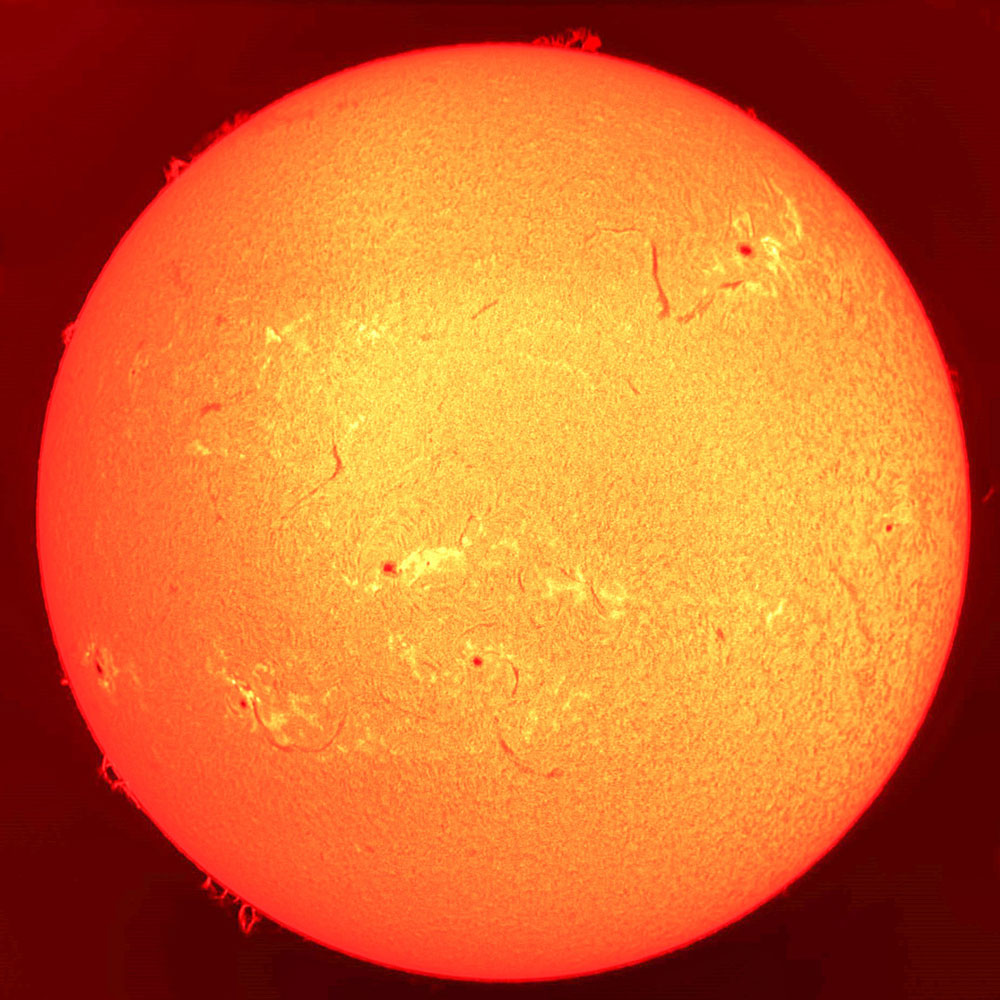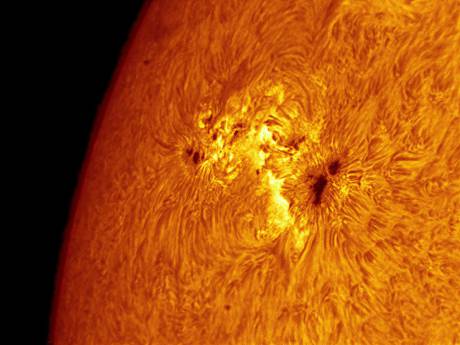Angstrom
The Angstrom is a unit of measurement, named after Anders Jonas Ångström. It is denoted by the Å symbol, and is equal to 0.1 nanometers (0.00000000001 meters). Classically the Angstrom has been used to quantify spectral lines, such as those important to astronomy like H-alpha, OIII, and SII. Currently the nanometer (nm) is the more common unit used for most applications, however the Angstrom is still prevalent when discussing solar viewing equipment such as the Etalons used in dedicated solar telescopes. It is easy to convert between the two by moving the decimal place one place. For example, Ha’s emission line can be expressed as 656.46 nm or 6,564.6 Å.
Annular Eclipse
“Annulus” refers to a ring shaped object, and is where the Annular Eclipse gets its name. As the Moon has an elliptical orbit around the Earth, it is not always the same distance away. An annular eclipse occurs when the Moon is at or near its farthest point from the Earth, making it appear smaller in the sky. Due to this, when the moon passes in front of the Sun it does not block it as entirely resulting in a thicker ring around the Moon than what is visible in a total eclipse. While still rare, this type of eclipse is more frequent than a total solar eclipse.
Astrophotography
This refers to photography of astronomical bodies and phenomena. Astrophotography is not new, for example the popular T threading still used today harkens from Tamron’s T-mount developed for their 35 mm cameras - however it has seen a notable increase in popularity with improvements in cameras, mounts, filters, and software making astrophotography much more accessible. This is not limited to celestial bodies such as nebulae, planets, or galaxies either, as solar imaging is now more within the reach of the average consumer than ever before.
Baily's Beads
This is the name for a visual phenomena that occurs during an eclipse, where dots or "beads" appear around the Moon. Due to the Moon being home to mountains and craters just like Earth, the outer edge of it is not a smooth circle but instead full of peaks and valleys. As a result when the Moon passes in front of the Sun these structures create sections where more or less Sun can shine through, forming the distinct beads.
Blocking Filter
Blocking filters are used in dedicated solar telescopes to reject all remaining light outside of the H-alpha wavelength. This is necessary as etalons pass harmonics of the desired wavelength. Luckily however these harmonics are far enough apart that while the filter in a blocking filter has a relatively speaking large bandpass, compared to that of an etalon, it can block them while still providing a clear view of the H-alpha light.
Chromosphere
Like Earth, the Sun has layers spanning from its surface down to its center. The chromosphere is one of these layers, and can be observed once some of the other visible light from the Sun is filtered out. As the chromosphere and its features are predominately only visible in H-alpha, a dedicated solar telescope is needed to isolate this wavelength that is otherwise washed out by brighter light standard solar filters pass.
Corona
The corona is the outermost layer of the Sun's atmosphere, extending far from the solar surface. This layer is usually invisible due to it being very diffuse and easily outshined by the other light emitted by the Sun, however is observable during a total solar eclipse. When a solar eclipse is at totality, where the Moon is directly in front of the Sun, the corona can be seen around the Moon.
Coronal Mass Ejections
Coronal mass ejections, commonly shortened to CME, are eruptions of high energy from the Sun. CME’s are similar to solar flares, and these ejections can occur after a flare, though these phenomena are different. In a CME there is a large explosion of energy, ejecting sizable amounts of electromagnetic energy and particles out into space. Again CME’s are similar to solar flares in that they interact with the Earth’s atmosphere and cause technological interference.
Dedicated Solar Telescope
While there are telescopes that permanently integrate standard solar films or glass which could be thought of as a dedicated solar telescope, typically the term is used to describe telescopes that use more specialized Etalon and blocking filters. These filters are designed to isolate a specific wavelength, H-alpha, from the wide spectrum of light that the Sun emits, revealing more detail and contrast on the solar surface. For more information, including what types of eclipses these are best suited for, check out the Solar Telescope section of our Must-Have Solar Eclipse Gear article.
Diamond Ring
Another visual phenomena that occurs during a solar eclipse, the "Diamond Ring" is related to Baily's Beads. As a solar eclipse progresses, Baily's Beads will begin to disappear. When all but one bead has disappeared, the eclipse can be said to resemble a diamond ring with one bright section "set" in an even band of light.
Eclipse
A solar eclipse occurs when the Moon passes between the Earth and the Sun, causing the Sun to be obscured by the Moon in the process. Since the Moon has to pass directly between the Earth and the Sun, a solar eclipse can only occur at the new Moon. While new Moons occur about once a month, the moon’s orbit is tilted resulting in many months where perfect alignment of the Sun, Moon, and Earth doesn’t occur. This means that even for those who land in the path of an eclipse (the band around the Earth where the Moon will pass in front of the Sun) may not see an eclipse; as this phenomena can be over in mere seconds. The longest a total solar eclipse can last is seven and a half minutes.
Etalon Filter
Etalons are the primary filters used in dedicated solar telescopes to isolate the H-alpha light emitted by the Sun. Contrary to standard astronomical filters that use coatings to block unwanted light, etalons use two reflective surfaces placed closely together that interact in such a way that only light of certain frequencies will pass through to the other side. The spacing between these surfaces and properties of the air inside determine which light is allowed through, features that are exploited in etalon tuning systems to adjust the wavelength being passed.
Hydrogen Alpha (H-alpha)
In very simplified terms, when atoms change energy levels, specific wavelengths of light can be emitted. Hydrogen has one of these wavelengths (or more specifically, spectral lines) around 656.46 nm, in the form of H-alpha. This is close to red and can be observed in nebulae - or more importantly for the subject at hand, in stars such as our Sun. When being written, H-alpha is commonly shortened to simply Ha in the astronomy community.
ISO Certified
The International Organization for Standardization (ISO for short) is an organization that, as the name implies, seeks to create sets of unified standards - most notably film speed standards. They created the ISO 12312-2 standard for products to be used in direct solar observing. Solar glasses, films, and other gear that have this certification, have been found to meet this agreed upon standard for safe viewing of the sun and solar eclipses.
Path of Totality/ Centerline
As the Earth is constantly spinning and orbiting the Sun, with the Moon continuously orbiting the Earth, the area on Earth's surface where the Moon appears to line up with the Sun shifts over the course of an eclipse. This traces a path across the Earth, where an eclipse will be visible at different times. This can have several "sections" or "lanes", to denote where a total solar eclipse will be visible vs only a partial solar eclipse. The section where a total eclipse is visible is known as the path of totality. Within this path, the line running directly in the middle of the path of totality is called the centerline. Locations that fall along the centerline will experience a total solar eclipse that lasts longer than areas further out in the path of totality.
New Moon
The Moon goes through several lunar phases, from New Moon to Full Moon and then back again. This cycle takes about 29 days, meaning there is a New Moon about once a month. At New Moon the Moon appears completely dark or unlit, and it is in this phase that a solar eclipse can occur.
Node
When describing the Moon's position in relation to a solar eclipse, a node is a point along its orbit that would place the Moon in line with the Sun. This isn't necessarily where an eclipse will happen, just a location where it can happen as the Moon still needs to be in the New Moon phase when passing through this point for eclipse to occur. There are two nodes in the Moon's orbit, one where a solar eclipse can happen and one where a lunar eclipse can happen.
Penumbra
Referring to a shadow, the penumbra is the lighter outer section that is only partly in shadow. When the Moon passes in front of the Sun, the section of the Earth that is only partly in shadow therefore is consider to be in the penumbra. From this zone, only a partial solar eclipse will be visible.
Saros Cycle
While it may seem like every eclipse is unique, it has been determined that about once every 18 years the Earth, Sun, and Moon will return to a similar position resulting in a similar eclipse; though the locations through which this near identical path will differ. This period of 18 years is known as a saros, and is used to describe this cyclical nature of solar eclipses.
Single Stacked/Double Stacked
Single or double stacking in a dedicated solar telescope context refers to the number of Etalon filters used. Stacking of filters is done to further isolate the wavelength of light that passes through the telescope, or in other words reject more light that isn’t the desired wavelength. The range of wavelengths above or below the desired wavelength is commonly referred to as a filter’s “bandpass”. The smaller this range is, the more detail and contrast from the selected wavelength can be resolved. This is desirable for solar viewing, where there is a good amount of H-alpha detail.
Smart Telescope
Smart telescopes are, relatively speaking, new in the consumer space. These telescopes seek to combine as much separate hardware as possible into one unit, and pair these electronics and optics with modern quality-of-life and computational advancements such as digital planetariums and target lists, plate solving, and image processing. Smart telescopes are often fully self-contained units that can be set down and then moved/ observed remotely from a mobile application. Most manufacturers now offer dedicated solar filters for these smart devices, allowing for general solar and solar eclipse viewing in addition to their night sky observing capabilities.
Solar Flare
A solar flare is an eruption of electromagnetic energy from the Sun. These eruptions occur in areas of high activity on the solar surface, and eject their electromagnetic energy far out into space. At times where the Earth is in the path of this energy, it interacts with the upper atmosphere and can cause radio wave interference.
Solar Granule
These “granules” give the surface of the Sun its textured appearance. These form when hot plasma pushes to the top, and cooler plasma begins to sink. The difference in temperature results in a bright center and dark edges. As the plasma sinks it begins to heat again, and the previously heated plasma begins to cool, resulting in an ever changing pattern across the solar surface.
Solar Maximum and Solar Minimum
The amount of activity on the Sun's surface is not static, instead increasing and decreasing over time. When activity is at its peak, this is known as the solar maximum. Intuitively, the solar minimum is when activity dies down and the Sun is at its most calm. This occurs cyclically, with the Sun reaching its solar maximum every 11 years on average. For solar observing, this is important as observable features such as sun spots, solar flares, and CME's are most prevalent during a solar maximum.
Solar Prominence
Solar prominences are “structures” that project from the surface of the Sun, and are sometimes referred to as solar “filaments”. These structures are loops of plasma that extend far out from the Sun, and can be seen during a total eclipse. These can be seen when generally observing the Sun (particularly in H-alpha) as well, as they contain comparatively cooler gas that gives them a darker appearance. These dark loops snaking across the solar surface is where they get their other name of solar filaments.
Solar Safe Film
Solar Safe Films are, as the name suggests, films that have been designed to provide a safe solar viewing experience. These films are covered on both sides in a coating that rejects most of the incoming light, only passing a safe amount through to be viewed. These films can often be referred to as Mylar films, due to part of their construction, or sometimes “white-light” films owing to the white hue they usually (but not always) give the Sun. For more information on solar films and how they compare to glass filters, read on in this article.
Solar Safe Glass
A popular option for safe solar eclipse viewing is the Solar Safe Glass filter. These filters use a piece of glass that is typically coated on the underside, as opposed to solar films which are coated both top and bottom. The solid construction makes them a bit more durable and easier to clean, as the uncoated outer surface can be cleaned without concerns of damaging the safety coating. These can sometimes be known as “orange view” filters, as the light they safely let through usually has a warmer tone as compared to solar films. To learn more information about these filters and how they stack up to the popular films, check out this article.
Sun Spot
When an area on the surface of the Sun has a strong localized magnetic field, a Sun spot is created. These spots are visible when viewing the Sun through a solar filter or dedicated solar telescope, appearing as dark dots on the solar surface. This dark appearance comes from a difference in temperature, as the power magnetic field impacts the ability of new hot plasma to flow which causes a cool spot to form.
Umbra
An umbra is the darker section of a shadow. When discussing a solar eclipse, this refers to the darker section of the eclipse which is the section that will observe a total solar eclipse. The path the umbra will trace along the Earth's surface as an eclipse progresses is what is known as the path of totality.
UTC
UTC is a standardization for time throughout the world. UTC 0 is the time zone at 0 degrees Longitude, with other time zones adding or subtracting an hour as they move away from this zone. For example New York City, NY in UTC -5 is 5 hours behind UTC time. As UTC does not observe daylight savings time, the difference from UTC can change in time zones that do. This standard is important to know as some events, such as solar eclipses that can travel through multiple time zones, and other astronomical data/ equipment may use this standard.

